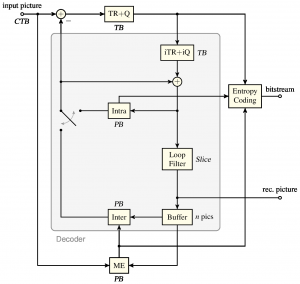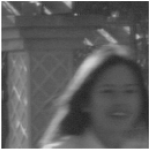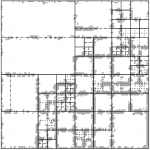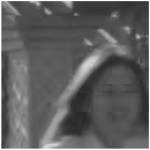 The block diagram presents the basic concept of the hybrid video coding scheme. This scheme has been the basis for all video coding standards since ITU-T H.261 in 1989.
The block diagram presents the basic concept of the hybrid video coding scheme. This scheme has been the basis for all video coding standards since ITU-T H.261 in 1989.
The pictures of the input video sequence are fed to the encoder. A prediction signal generated from information available both, encoder and decoder is subtracted from the input signal. The residual, representing the resulting prediction error, is transformed, quantized, and encoded into the bitstream. The prediction parameters needed to reproduce the prediction signal at the decoder side are encoded into the bitstream as well. Under the assumption of error-free transmission, the encoder and decoder sides are synchronized since the encoder includes the complete prediction structure of the decoder. In the figure, the building blocks which are included in both encoder and decoder are
marked by a gray box.
(Acronyms: CTB: coding tree block; ME: motion estimation; PB: prediction block; Q: quantization; TB: transform block; TR: transform)




